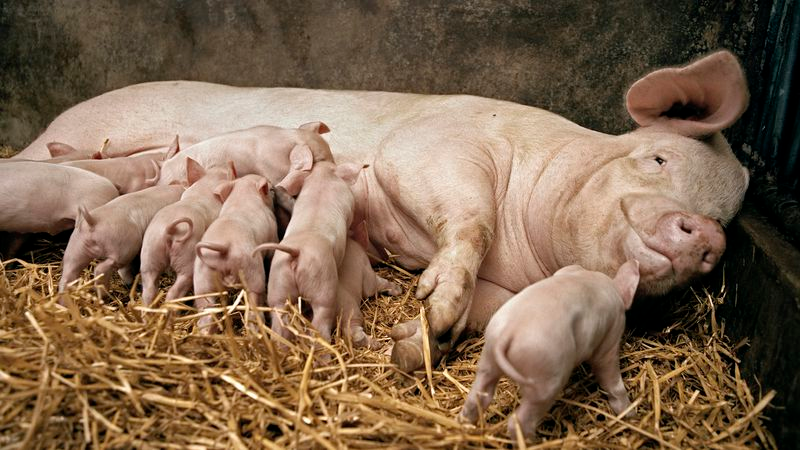Why Don't We Drink Pig's Milk?
We may receive a commission on purchases made from links.
Given that humans consume every other part of the pig with slobbering glee, it's a wonder why the thought of drinking pig's milk is gag-inducing. Taste-wise, it's not as though it's especially rancid. As one pig farmer told New York food critic Robert Sietsema, "It's more watery... Pig milk is really gamy. You know how goat's milk is? I like it, but lots of people don't. Pig milk tastes even stronger than that."
Still, despite being an acquired taste, it seems like it could be a popular alt-milk for the farmers market crowd. Compositionally, milk from a sow is more nutrient-dense than milk from a cow, with higher fat, protein, and lactose levels. Yet no one's clamoring for pig milk. Why?
The Takeout asked Dr. Charles Maxwell, professor of animal science at the University Of Arkansas. He offered a few theories.
First, there's the economics of producing pig's milk. There haven't been machines manufactured that would efficiently milk a sow's 14 teats. And what milk could be produced is paltry by comparison: A sow produces one-fifth the milk of a cow. Maxwell also said the hog industry's objective is to produce as many pigs as possible (sows give birth to roughly two dozen piglets annually)—and a sow can't get pregnant while she's lactating.
And the bigger hurdle might be the pig itself.
Maxwell said when they obtain milk samples from sows, the animal has to be lying down. "I don't know how difficult it would be to milk the sow standing up," he said. "But it would be another learning curve that would potentially be difficult to overcome. It's not a feasible scenario."
Not that that's stopped some people from trying. Edward Lee, the James Beard Award-nominated chef of 610 Magnolia, was so intrigued with serving pig's milk cheese at his Louisville, Kentucky, restaurant that he experimented with different ways of milking a pig. The most extreme involved ingratiating himself to the sow by smearing pig poop on his jacket and sitting near her until she was familiar enough with him to fall asleep. Then he'd move in to milk—but even this was to no avail. In the end, as Lee told Modern Farmer, "Cows have been domesticated for so many years, they're very docile. You get within 15 feet of a sow, she'll get up on her hind legs and get defensive. She might charge you. And once she charges you, just forget it. She's already identified you as an enemy."
Lee added, "Goats don't like to be milked either. But if you get kicked by a goat, you'll get bruised. Get hit by a 250-pound sow, you're dead. There's a very basic practical reason people don't attempt it. No one else is crazy enough to get in the barn with 'em."
Combine the economics and logistical difficulties—then add the lack of consumer demand—and the likelihood of seeing pig's milk on Whole Foods shelves anytime soon is slim. As Maxwell concluded, "Unless someone discovered something in sow's milk that revolutionary, like it kept you 10 years younger or it could replace Viagra, then maybe. But I seriously doubt there's anything unique in sow's milk, and it would be more expensive."
